Introduction to Operating systems | Midterm II
1/48
There's no tags or description
Looks like no tags are added yet.
Name | Mastery | Learn | Test | Matching | Spaced |
|---|
No study sessions yet.
49 Terms
Which of the following is not a motivation for using virtual memory in a computer system?
We want to avoid internal fragmentation, where we allocate slightly more memory than is actually needed.
Say we have a computer architecture in which addresses contain 10 offset bits. How large are the virtual pages (and the physical frames) in this system?
1024 Bytes
Say we have a 32-bit computer architecture in which pages are 512 bytes in size and page table entries are 8 bytes in size. How many bytes of main memory are consumed by a single-level page table in this architecture?
64 MiB
Which of the following is true about multi-level page tables compared to single-level page tables?
Address translation with a multi-level page table will require more round trips to memory than address translation with a single-level page table.
Assume we have an architecture with a single-level page table. How many round trips to memory are necessary to retrieve data at a particular memory address if we have a cache miss and a TLB hit?
1
Assume we have an architecture with a single-level page table. How many round trips to memory are necessary to retrieve data at a particular memory address if we have a cache miss and a TLB miss?
2
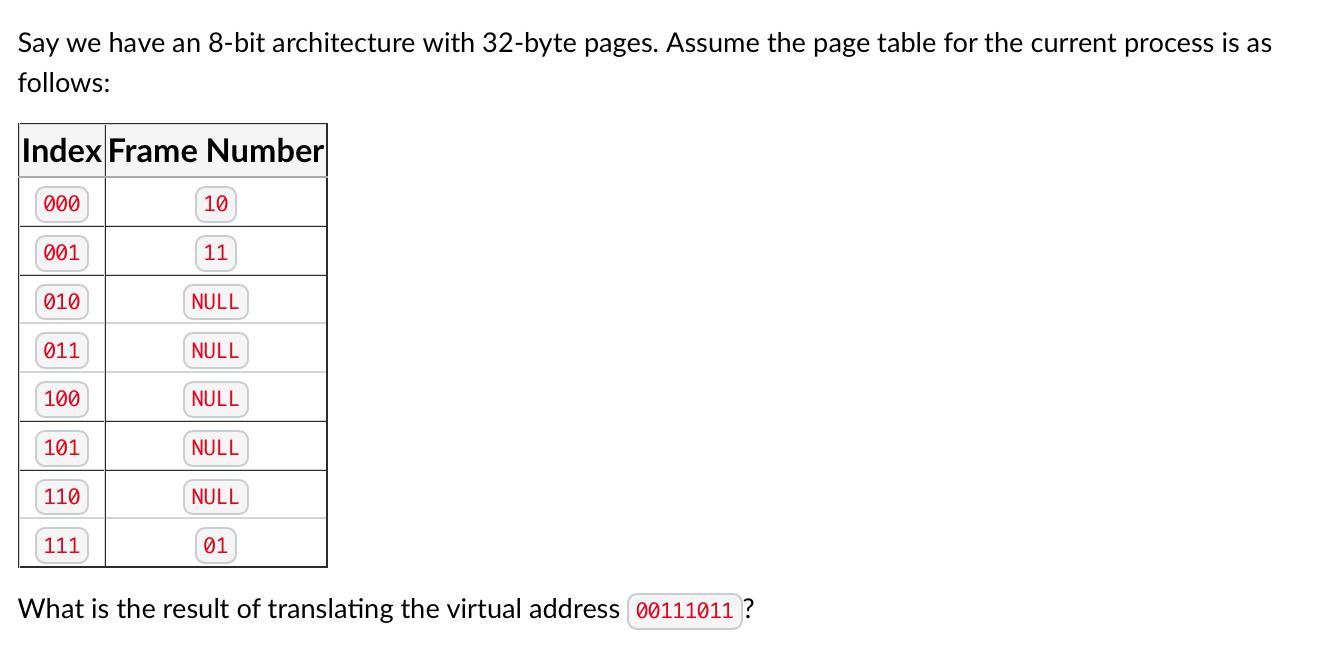
1111011
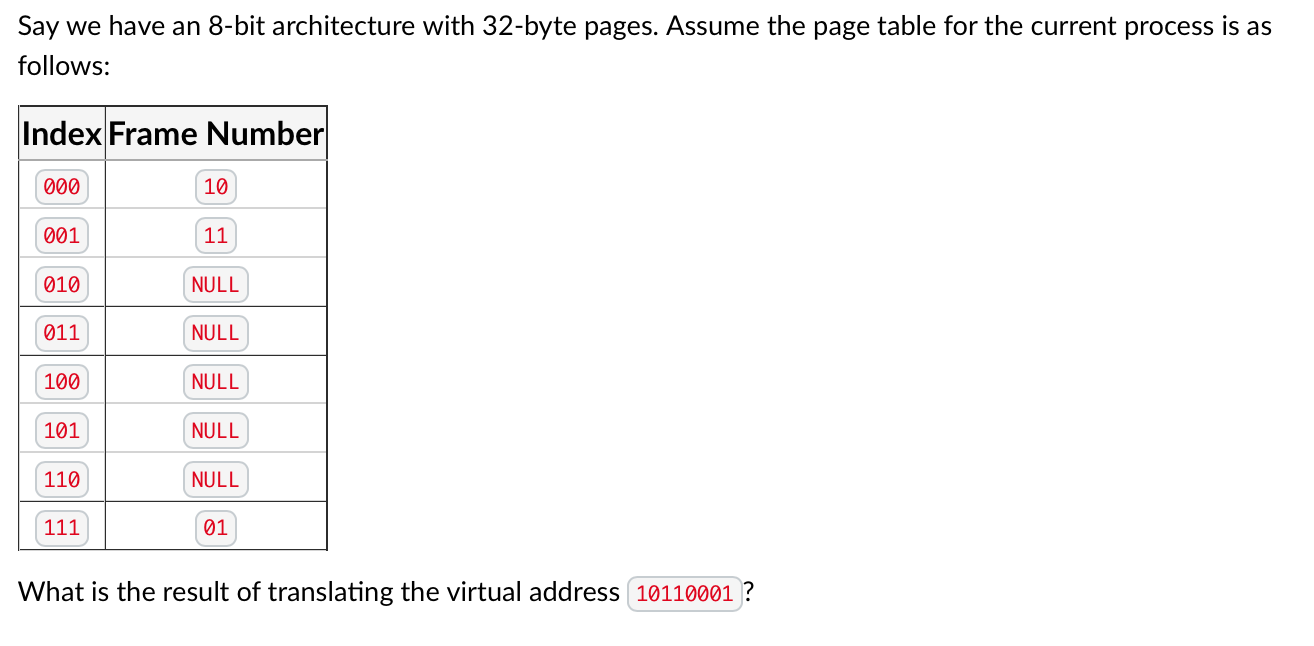
Segmentation Fault
Which of the following is the default response upon receipt of the SIGCHLD signal?
Ignore the signal
Which of the following is true of a blocked signal?
The signal remains pending until it is unblocked.
Description for a file that is currently open in at least one process?
There is one i-node table entry for the file, at least one global file table entry for the file, and at least one file descriptor table entry for the file.
Description for a file that is currently open in exactly one process?
There is one i-node table entry for the file, one global file table entry for the file, and at least one file descriptor table entry for the file.
Which of the following is false about the interface offered to the operating system by storage devices like hard disk drives and solid-state drives?
When a file is accessed, the device keeps track of which blocks contain the file’s contents.
hat is the difference between the file paths my_program and ./my_program?
my_program and ./my_program refer to the same file name, but the former syntax causes the shell to search directories in PATH while the latter does not.
How many i-nodes must be accessed open the file /home/mhamilton/apollo/guidance_prog.s?
5
Which of the following is not true about directories?
Directories do not use data blocks to store their contents as ordinary files do.
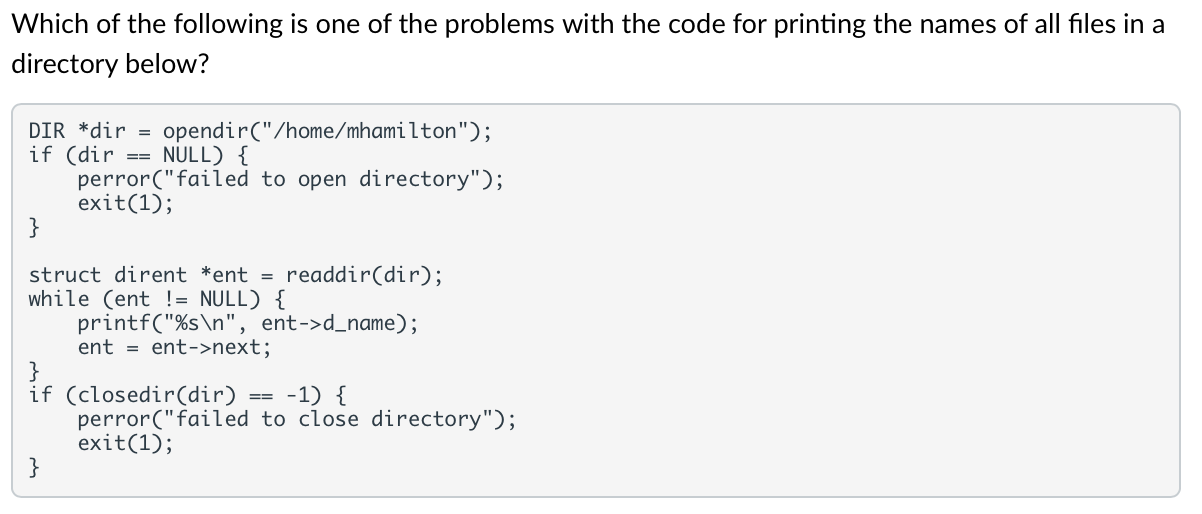
next is not a field within the struct dirent type – this is not how we advance to the next entry.
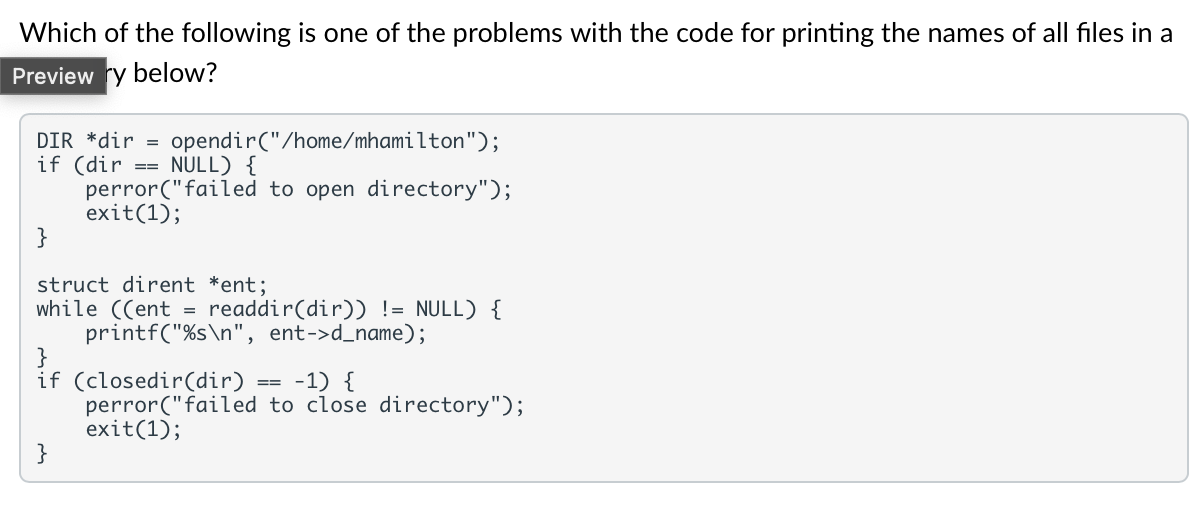
This will print all members of the directory, not just regular files.
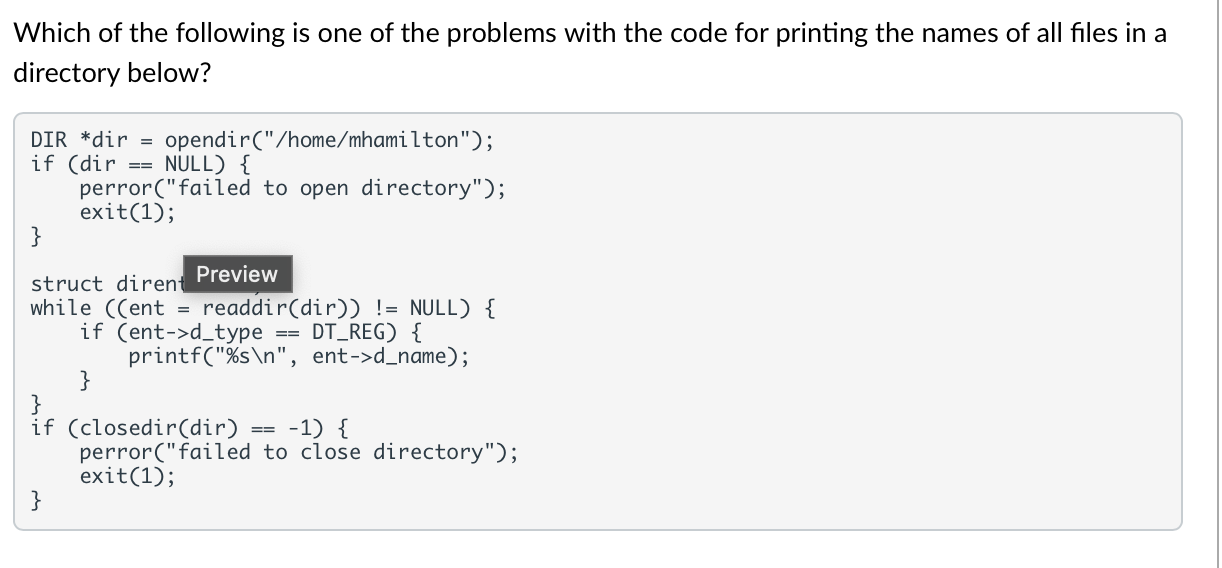
There is insufficient error handling around the call to readdir().
Say we have a file hello.txt and are want to create either a hard link or a soft link (symbolic link) to this file. Which of the following is not true about these two possible options?
If the original file hello.txt were to be removed, then both links would break.
> cp file.c file-back.c
New directory entry, new i-node allocated, new data blocks are allocated to hold file contents
> mv file.c file_new.c
New directory allocated, directory entry removed
> ln file_new.c file_code.c
New directory entry created, I-node reference count increases
>ln -s file_new.c file_code_s.c
New directory entry created, new I-node is allocated, new data blocks are allocated which point to the original file
> rm file_back.c
Directory entry is removed, an I-node is deallocated, data blocks are deallocated
Prior: > ln file_new.c file_code_s.c
> rm file_code_s.c
Remove directory entry, I-node is deallocated, data blocks are deallocated
Prior: >ln file_new.c file_code.c
> rm file_code.c
Directory entry is removed, I-node reference count decreases
> rm file_new.c
Directory entry is removed, I-node is deallocated, data blocks are deallocated
Which signal types cannot be blocked?
SiGKILL
Why does the struct sigaction type have the field sa_mask?
To allow a new signal mask to be put into effect while a signal handler is executing
What is true of system calls in the presence of signals?
System calls will usually be restarted if the SA_RESTART options is in effect
Example of a reentrant function?
stroke_r()
Why is the use of sigsuspend() preferred over pause()?
sigsuspend() atomically modifies the current signal mask and awaits a signal, while pause() may result in missed signals
What is true if we have the variable int a[2] and call pipe(a)?
a[0] is now the read end of a pipe and a[1] is the write end of that pipe
What is the maximum amount of data that can be buffered in a pipe on today’s Linux systems?
16 pages
What happens when a process executes a write() to a pipe with a full buffer?
The write() blocks until sufficient space becomes available in the buffer
What happens when a process attempts to read() from a pipe when all relevant processes have already closed the pipe’s write end?
read() returns 0
How are pipes shared between processes?
pipe file description must be inherited through fork()
What is NOT one of the differences between a FIFO (first-in, first-out) and a pipe?
A FIFO has its contents stored on disk while a pipe’s contents are buffered in memory
How can we represent an array of pipes in C code?
As an array of int elements, two per pipe
Say we have a properly initialized array of structures polled elements of length n called fds. When will the system call poll(fds, n, 10) return?
It will return at least one of the referenced file descriptors has a pending event or after a timeout of 10 milliseconds expires, if no events have yet occurred
Say we have properly initialized array of structures pollfd elements of length n called fds. When will the system call poll(fds, n, 0) return?
It will return immediately, after checking the status of each referenced file descriptor
Say we have a properly initialized array of struct pollfd elements of length n called fds. When will the system call poll(fds, n, -1) return?
It will return when at least on one the referenced file descriptors has pending event
What was the problem with the splice() system call behind the Linux security vulnerability discussed in lecture?
Data was “copied” from a file to a pipe by allowing a page of memory to be shared between the buffer cache and the pipe’s buffer. This sharing continued after more data was written to the pipe, accidentally modifying the file as well
A process initializes a shared memory segment using shm_open() and mmap() and then forks n child processes. How many more mmap() calls are made in total among these n+1 total processes to ensure that every process has access to the shared segment?
0
A parent and its n child processes are all using the same shared memory segment. How many total calls to munmap() will be necessary to properly clean up the shared segment as the processes terminate?
n+1
A parent and its n processes are all using the same shared memory segment, which was created using shm_open() and mmap(). How many total calls to she_unlink() will be necessary to properly clean up the shared segment as all processes terminate?
1
What are examples of the message passing paradigm?
FIFOs, signals, pipes